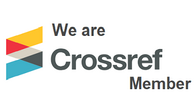Representasi Gender dalam Buku BIPA 7 Seri Pelajar “Sahabatku Indonesia”
Abstract
Gender bias in textbook material affects learners in learning language. The purpose of this research is to reveal the gender representation in the BIPA 7 Learners Series “Sahabatku Indonesia”. Content analysis is carried out on the textual and visual material contained in the book. The results of this study reveal that the male character representation is more dominant than the female textually. Based on their social roles, male characters in textual materials are more diverse than characters that represent women. In addition, the results of the analysis of visual material in the form of pictures, photographs and illustrations also show the dominance of men over women with a ratio of 4: 1. In conclusion, the material contained in the analyzed books has not provided equal opportunities between women and men in Indonesian language teaching materials for foreigners.
Keywords
Full Text:
PDFReferences
Abdorreza, T. (2014). Gender representation in ‘Top-Notch’ series: A critical discourse analysis perspective. International Journal of Research Studies in Psychology, 3(2), 39-51.
Amerian, M. & Esmaili, F. (2015). A Brief Overview of Critical Discourse Analysis in Relation to Gender Studies in English Language Textbooks. Journal of Language Teaching and Research, 6(5), 1033-1043.
Blumberg RL. (2007). Gender bias in textbooks: a hidden obstacle on the road to gender equality in education”. UNESCO.
Byrd, P. (2001). Textbooks: Evaluation for selection and analysis for implementation. In M. CelceMurcia (ed.), Teaching English as a second or foreign language. (3rd edn). Boston, MA: Heinle & Heinle, 415–427.
Canale, M., & Swain, M. (1980). Theoretical bases of communicative approaches to second language teaching and testing. Applied Linguistics,1, 1-47.
Cunningsworth, A. (1995). Choosing your Coursebook. Heinemann English Language Teaching.
Foroutan, Y. (2012). Gender representation in school textbooks in Iran: The place of languages. Current Sociology, 60(6), 771–787
Gharbavi, A. & Mousavi, S.A. (2012) A Content Analysis of Textbooks: Investigating Gender Bias as a Social Prominence in Iranian High School English Textbooks. Sciedu Press, 1(1)
Graves, K. (2000). Designing Language Course, A Guide for Teachers. Boston. Heinle. Cengage Learning.
Hameed, A. (2014). Language and Gender: An analysis of english textbooks produced by Punjab textbook board for elementary level in Pakistan. Journal of Education and Practice, 5(1), 108-114.
Harmer, J. (2007). How to teach English. China: Pearson Education Limited.
Hartman, P. L., & Judd, E. L. (1978). Sexism and TESOL materials. TESOL Quarterly, 12(4), 383-393.
Hutchinson, T. & Torrres, E. (1994). The textbook as agent of change. ELT Journal, 48(4), 315-328.
Hymes, D. H. (1972). On Communicative Competence. In Pride, J. B., & Holmes, J. (Eds.), Sociolinguistics, 269-293. Baltimore, USA: Penguin Education, Penguin Books Ltd.
Lee, J.F.K. (2014). Gender representation in Hong Kong primary school ELT textbooks – a comparative study. Gender and Education, 26(4), 356-376.
Kenneth W K. Law & Annie H. N. Chan (2004) Gender Role Stereotyping in Hong Kong's Primary School Chinese Language Subject Textbooks. Asian Journal of Women's Studies, 10(1), 49-69.
Lakoff, R. (1975). Language and Woman's Place. In Language in Society. Cambridge University Press,2, 55-80.
Nofal, M.Y. &, Qawar, H.A. (2015). Gender Representation in English Language Textbooks: Action Pack 10. American Journal of Educational Science, 1(2),14-18.
Mukundan, J. & Nimehchisale, V. (2008). Gender Representation in Malaysian Secondary School English Language Teksbook. Indonesian Journal of English Language Teaching, 4(2) 65-84.
O'Neill, R. (1982). Why use textbooks?. ELT Journal, 36(2), 104-111.
Porreca, K. L. (1984). Sexism in current ESL textbooks. TESOL Quarterly, 33(3), 329-384.
Renner, Christopher, (1997). Women are “busy, tall and beautiful” – Looking at sexism in EFL materials. University of Naples.
Savignon, S. J. (1972). Communicative Competence: An Experiment in Foreign Language Teaching. Philadelphia: The Centre for Curriculum Development, Inc.
Sunderland, J. (2006). Language and Gender: An advanced resource book. Newyork. Routledge.
Widdowson, H. G. (1983). Learning Purpose and Language Use. Oxford: Oxford University Press.
DOI: https://doi.org/10.26499/jbipa.v2i2.2958
Refbacks
- There are currently no refbacks.
Publisher:
Badan Pengembangan dan Pembinaan Bahasa, Kementerian Pendidikan dan Kebudayaan Republik Indonesia
Address: Jl. Daksinapati Barat 4 No.11, RT.11/RW.14, Rawamangun, Kec. Pulo Gadung, Kota Jakarta Timur, Daerah Khusus Ibukota Jakarta 13220 Phone: +62 (021) 4896558

Jurnal Bahasa Indonesia bagi Penutur Asing (JBIPA) is licensed under a Creative Commons Attribution-NonCommercial 4.0 International License.
View My Stats -->





